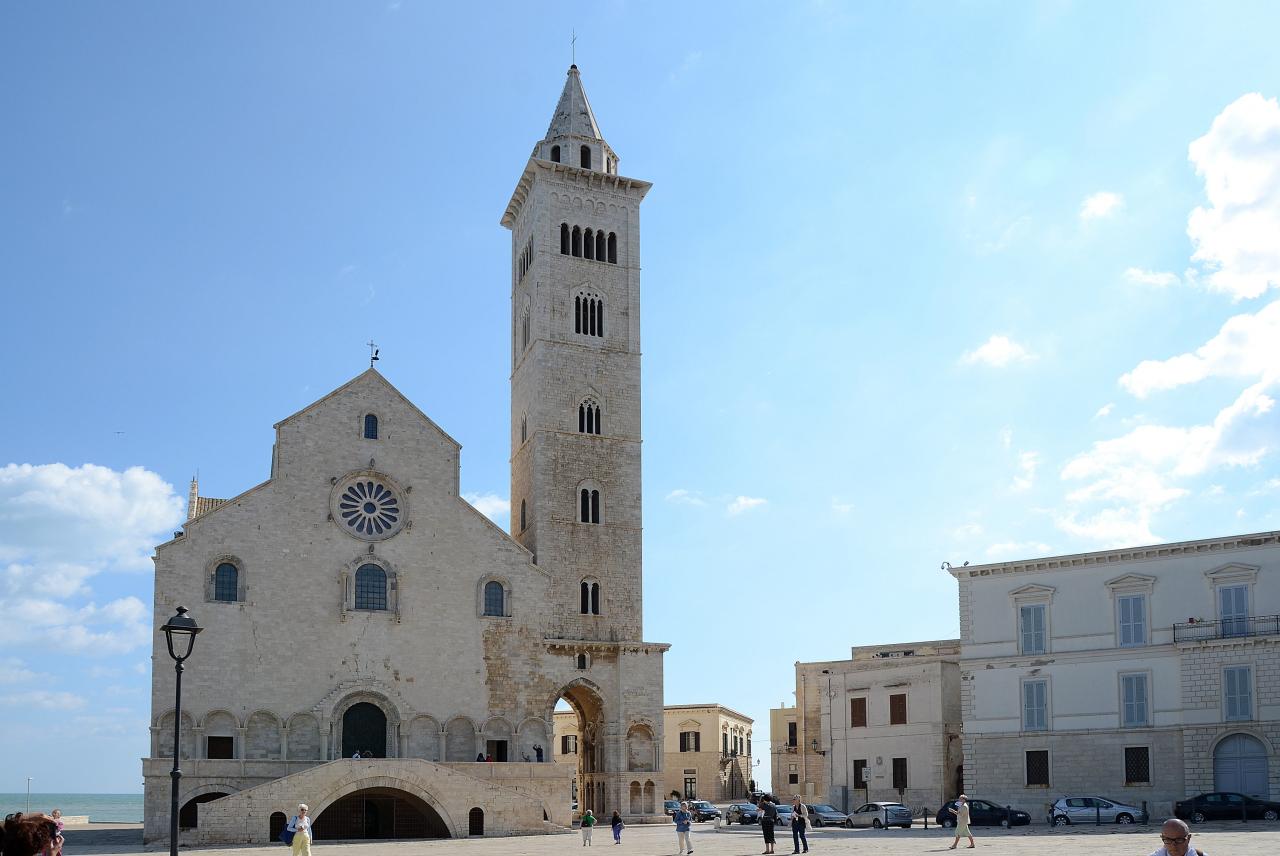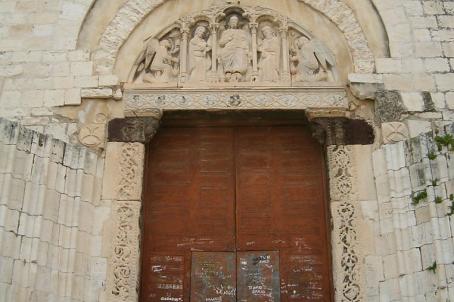Trani Cathedral
Trani Cathedral was built between 1099 and 1143 during the period of Norman rule. The cathedral is an example of the Romanesque architecture of Puglia. It was built with the typical limestone tufa extracted from the quarries of the town, characterised by a very light pink, almost white colour. The church stands out for its important transept and for the use of the ogival arch forming a passage under the bell tower, a rare phenomenon in Romanesque architecture.






